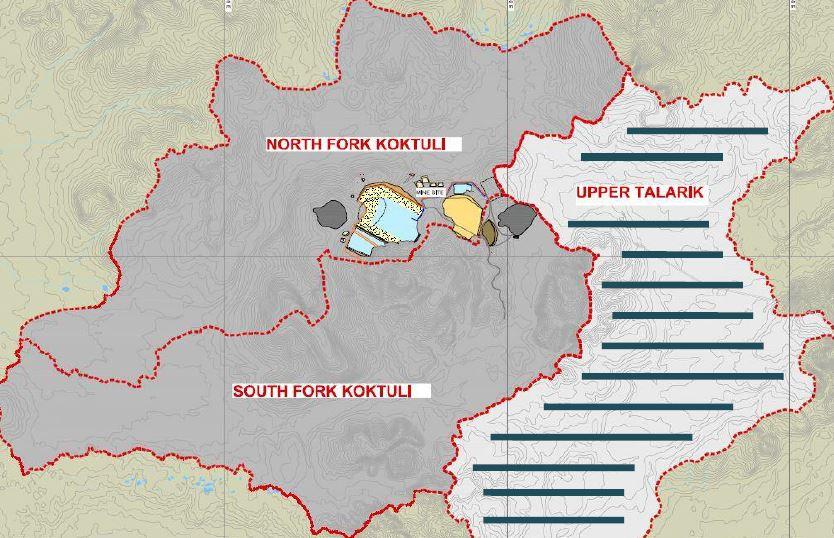
Pebble CEO Tom Collier began the roll out of Pebble mine’s new design early Thursday morning in Anchorage.
The company is focusing on a much smaller footprint in the Pebble West deposit only.
“We set as a goal trying to get into the ballpark of what the Obama EPA would have allowed to have been built in the region, and we’ve done that,” Collier said. “The Bristol Bay Watershed Assessment said that something 4.7 square mile footprint could be built, and we’re at 5.4 square miles as we go forward with this project.”
A footprint includes the pit, tailings facilities and waste rock, the latter of which the company said will be used in construction of the tailings dams and not left in open piles.
Environmental Protection Agency estimated Pebble’s footprint would be at least 13.5 square miles, Collier said, more than double what the company is now planning.
Including all other facilities and construction, Pebble now said the entire project footprint has been reduced to 12.7 square miles, less than half what it used to be, and now smaller than the proposed Donlin Gold Mine on the Kuskokwim River.
Collier said these and other changes are in direct response to the concerns and criticisms raised over the past decade.
“We’ve decided that we’re not going to do secondary gold recovery in this project, so there’ll be no cyanide in the region,” Collier said. “Tailings facilities will be much smaller. We’ll separate out those that might generate acid if they’re not treated in a special way, and make that facility lined and even more buttressed so it’ll be safe. By making the mine smaller, we’ll only be in two drainages, the North and South Fork Koktuli, and not in the Upper Talarik drainage which was part of the original plan.”
The current design of a Pebble mine, during normal operations, will disturb or damage a “negligible, as in, not measurable” amount of sockeye salmon spawning habitat, Collier said.
To measure what could happen to sockeye in the event of a catastrophic failure of a tailings facility, similar to the 2014 Mount Polley disaster in British Columbia, the company is using the Bristol Bay Watershed Assessment developed under President Obama’s EPA. That study suggested that with no remediation or cleanup, some 10 miles of the Koktuli’s salmon habitat would be damaged for 10 years.

“When we look at what that looks like in terms of sockeye production, it would literally be two one hundredths of one percent of the sockeye production in the region,” Collier said. “That’s a risk that we don’t want to run, and we believe we’ve protected against that risk, but that’s the worst case. And those that think we would or could destroy all the salmon in Bristol Bay just don’t have the facts before them.”
To move the ore to Cook Inlet, Pebble’s new plan uses an ice-breaking ferry to cross Iliamna Lake to a shorter new road east of Kokhanok. Not building a northern or southern route road around the lake will significantly cut down Pebble’s overall impact on wetlands, Collier said.
Those routes are still being explored as alternatives for an environmental impact statement.
Pebble is looking to form a revenue sharing corporation to pay out dividends to local residents and village corporations during the project, since the deposit is not on Bristol Bay Native Corporation lands.
The individual checks may be $500, and the corporations may see $500,000 annually.
Collier wants to find new ways to help local fishermen, and produce enough power to offer low cost electricity for the region. That power could come from a new natural gas plant across Cook Inlet or be generated closer to the site.
The project has been scaled back from an estimated annual operating budget of $1 billion to $400 million.
Pebble believes annual royalties to the Lake and Peninsula Borough will still be around $20 million, that local residents will have access to some 1,000 news jobs, and village corporations will have access to ample new contracts.
Pebble does not have a new partner yet, Collier said, but he is still planning to file a permit application before the end of the year.
